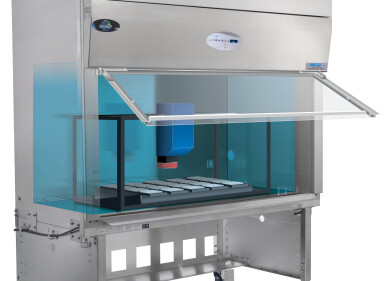Laboratory Products
What is Western Blotting?
Oct 22 2014
Getting the right medical treatment at the right time is key to tackling illness and disease. Fortunately for many of us, all that is needed is a quick visit to the GP. Some reassurance and a course of antibiotics, and a week later we are fighting fit. However, if it is a little more serious the doctor may require the help of an analyst to carry out detailed detective work to diagnose the patient’s illness. One method used is to determine the antigens and proteins in the patient’s body — and Western blotting is one of the laboratory techniques used to do this.
With a name like Western blotting you might be wondering if there is an Eastern blotting too — and there is. The original blotting technique was Southern blotting. Named after Edwin Southern, the scientist who developed the method, the technique was developed to identify DNA sequences in strands of DNA. In 1979 Harry Towbin developed a method based on Southern blotting that could detect specific proteins in a mixture extracted from cells. W. Neal Burnette gave it the name Western blotting as a play on the name Southern blotting — who said scientists do not have a sense of humour? Subsequently, Northern and Eastern blotting techniques were developed: Northern for RNA and Eastern as an extension of Western blotting.
But what specifically is a Western blot used for? It is used to show the presence of a specific protein in a sample. A relatively simple technique in principal, it is often used in conjunction with other antibody based detection methods in both research and diagnostic testing — forming the basis of diagnoses including human immunodeficiency virus (HIV) and prion diseases such as bovine spongiform encephalopathy (BSE).
There are three key stages used in a Western blot:
- Gel electrophoresis is used to separate the proteins from the sample matrix. The proteins are separated by size/mass using a weak electric field applied across a gel. Using a different strength electric field, different gels or a different pH can enhance the separation.
- The next stage is the blotting, which is the transferring of the separated proteins to a solid support for further analysis. Different techniques can be used including diffusion or vacuum transfer - but often an electric field perpendicular to the gel surface is used to speed up and make the transfer efficient.
- The final stage is the detection or identification of the target protein. Antibodies are used to bind to the protein, with the antibodies then detected either directly or indirectly using a secondary antibody.
Western blotting continues to be used in research using antibody arrays, searching for antibodies to known antigens and proteins. This simple, but very powerful test is being used at the forefront of drug research with advances in techniques being made as shown in this article: The Advantages of the Celvin® S Western Blot Chemiluminescence System Compared with Film-Based Detection and the Related Cost Savings Associated with Long Term Usage.
Digital Edition
International Labmate 49.6 - Sept 2024
September 2024
Chromatography Articles - HPLC gradient validation using non-invasive flowmeters Mass Spectrometry & Spectroscopy Articles - From R&D to QC, making NMR accessible for everyone: Putting NMR...
View all digital editions
Events
Oct 06 2024 Liverpool, UK
Oct 08 2024 Gothenburg, Sweden
Oct 09 2024 Birmingham, UK
Oct 09 2024 NEC, Birmingham, UK
Oct 15 2024 Milan, Italy








.jpg)









